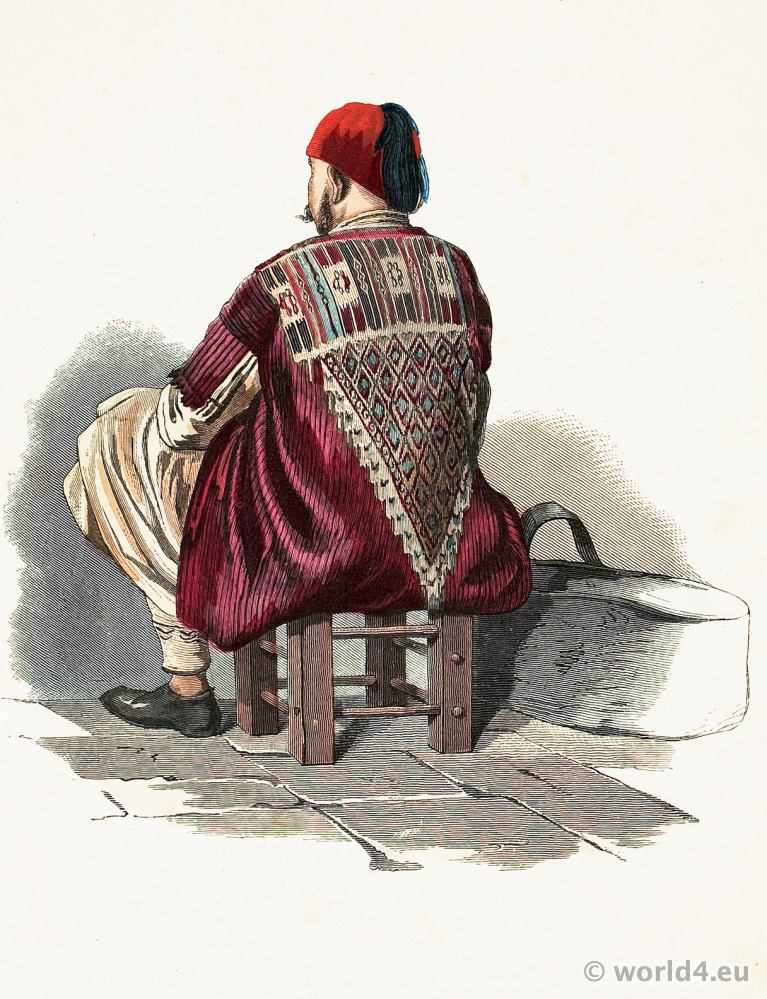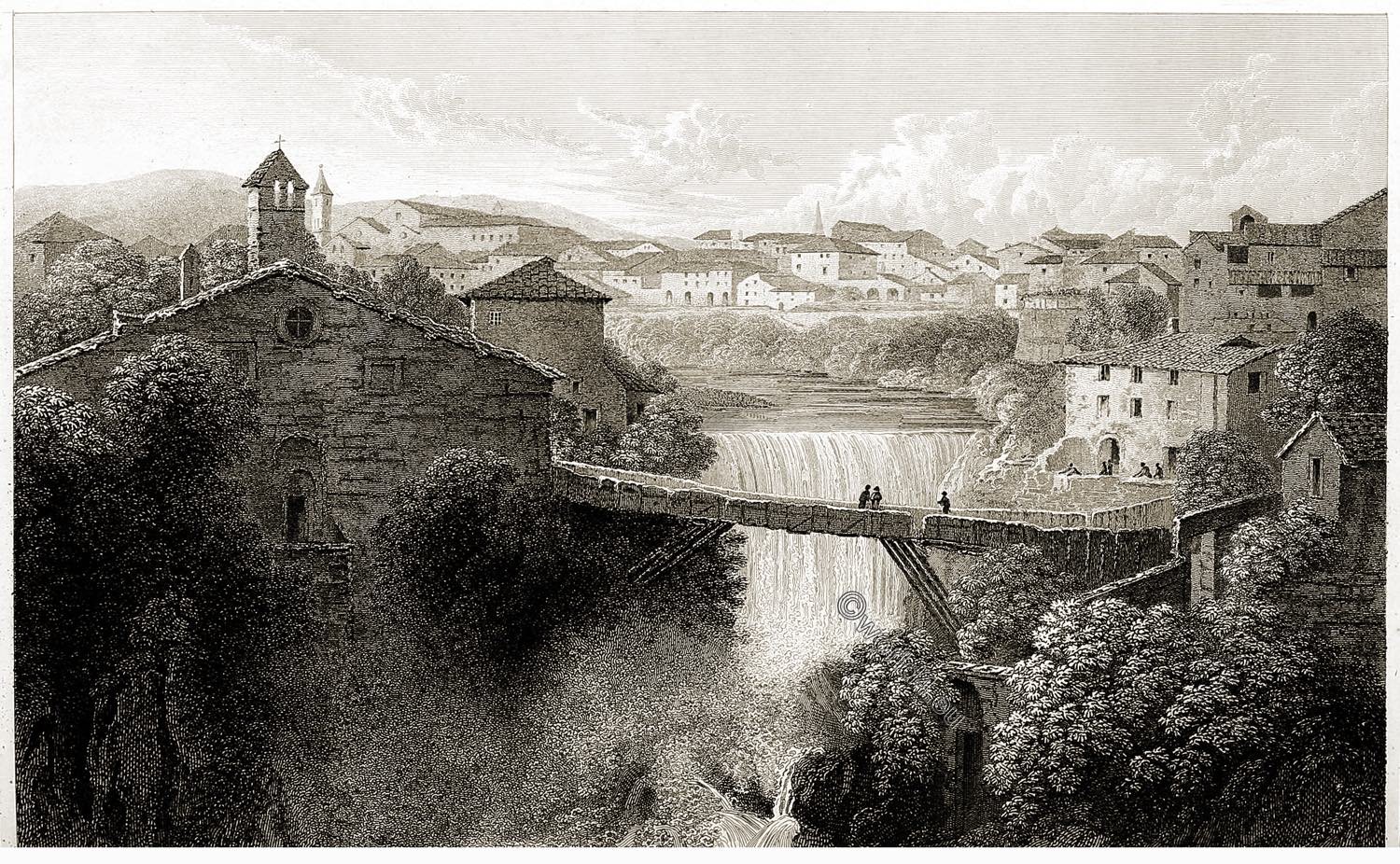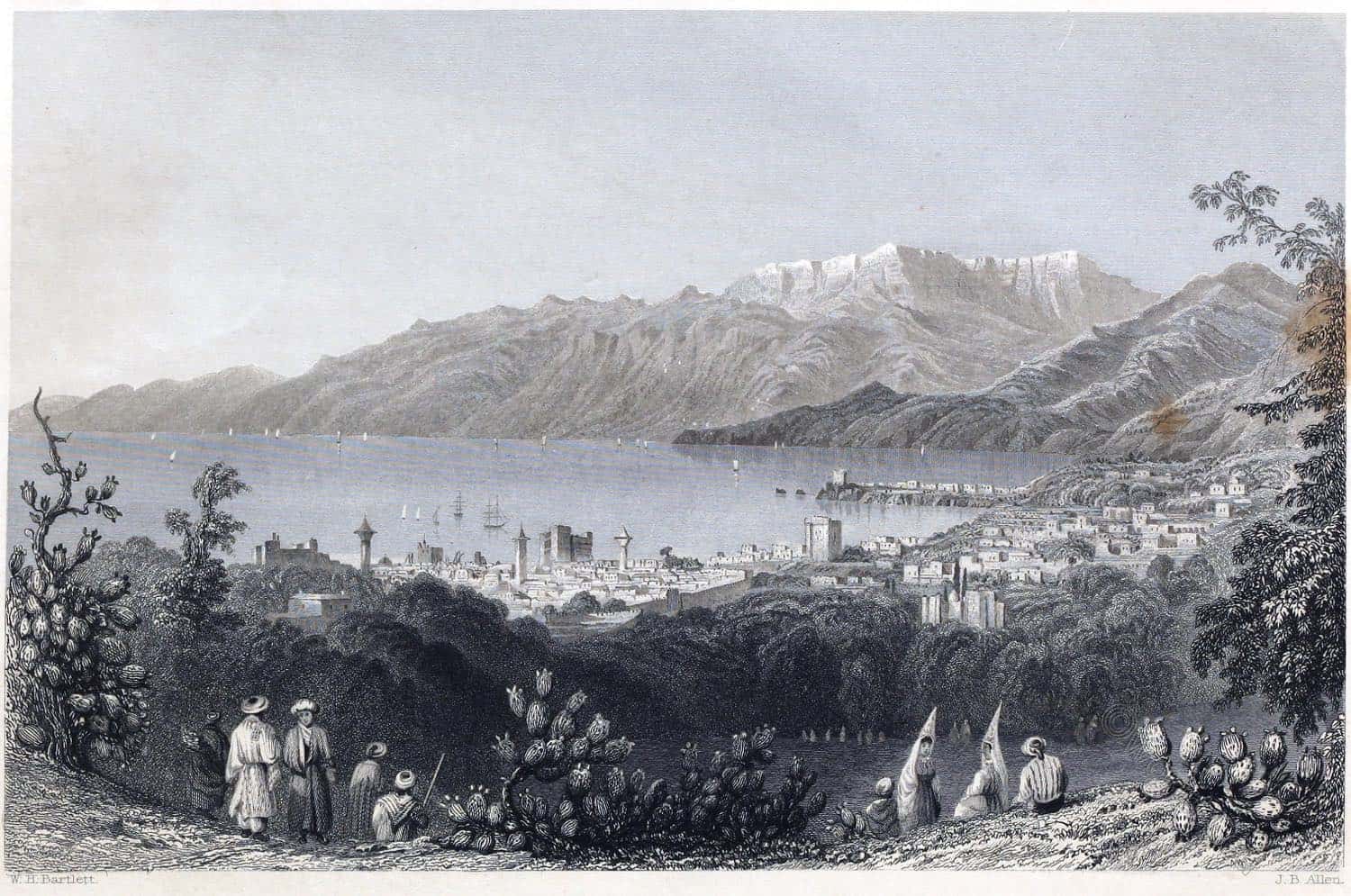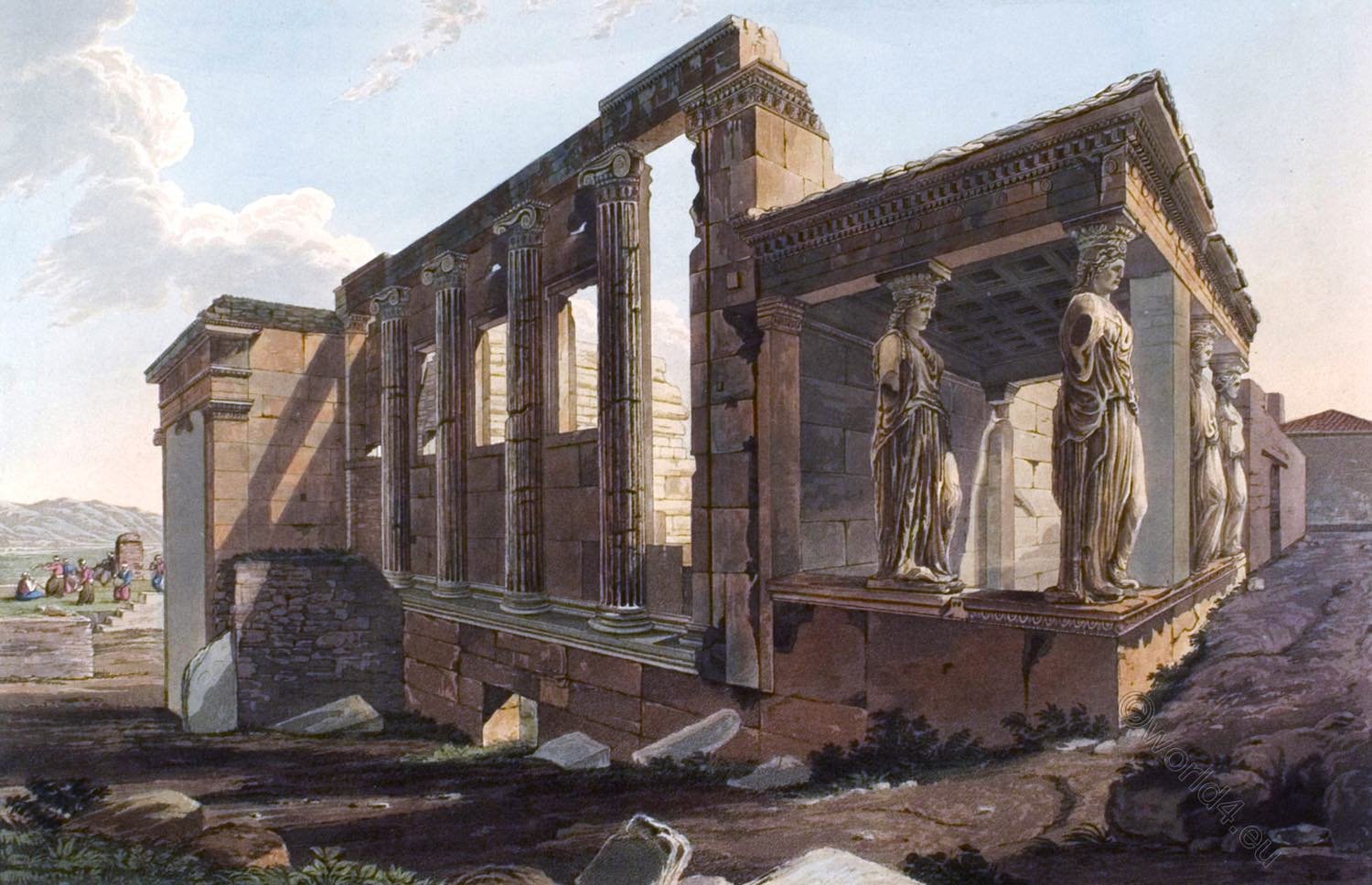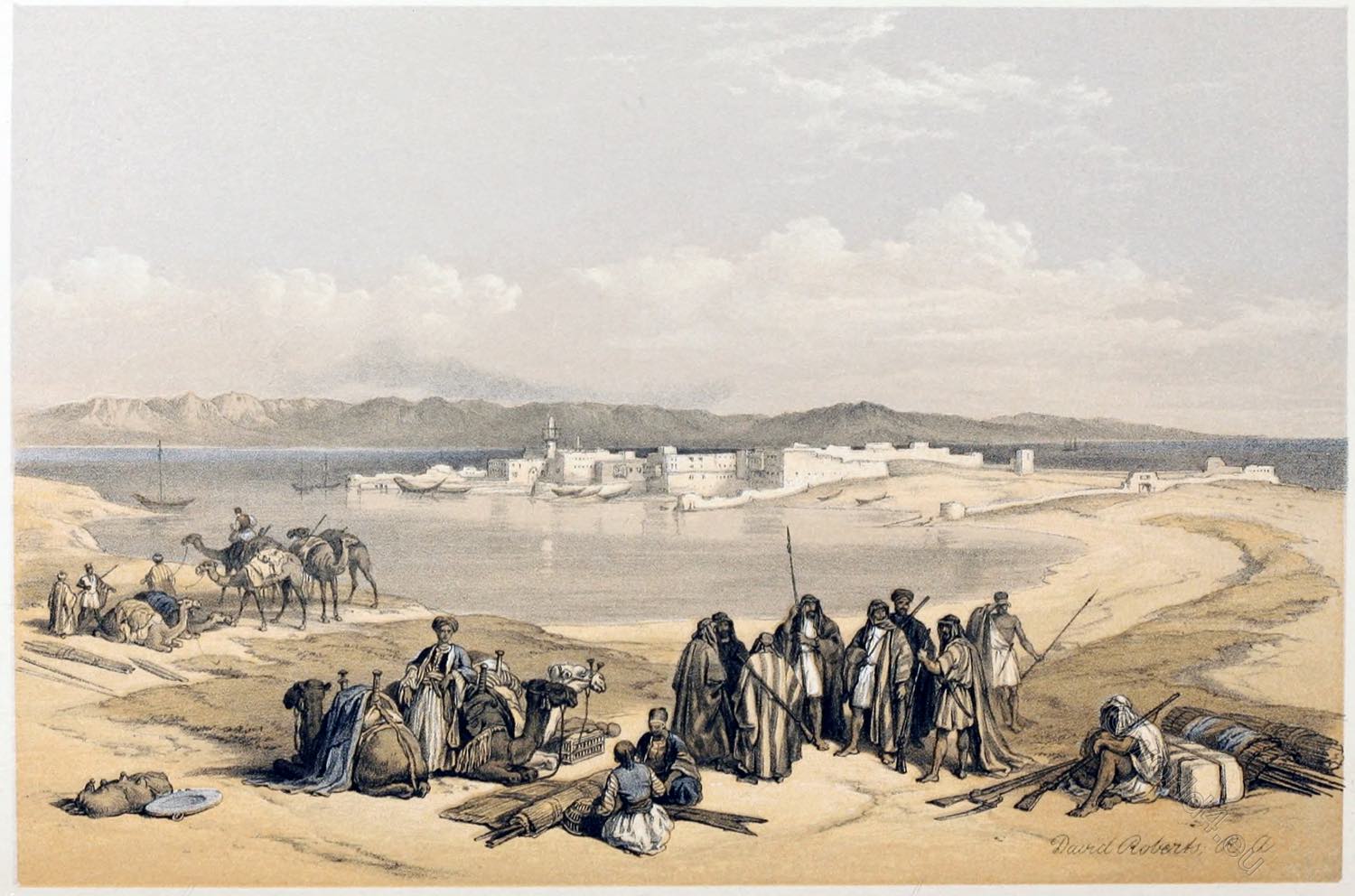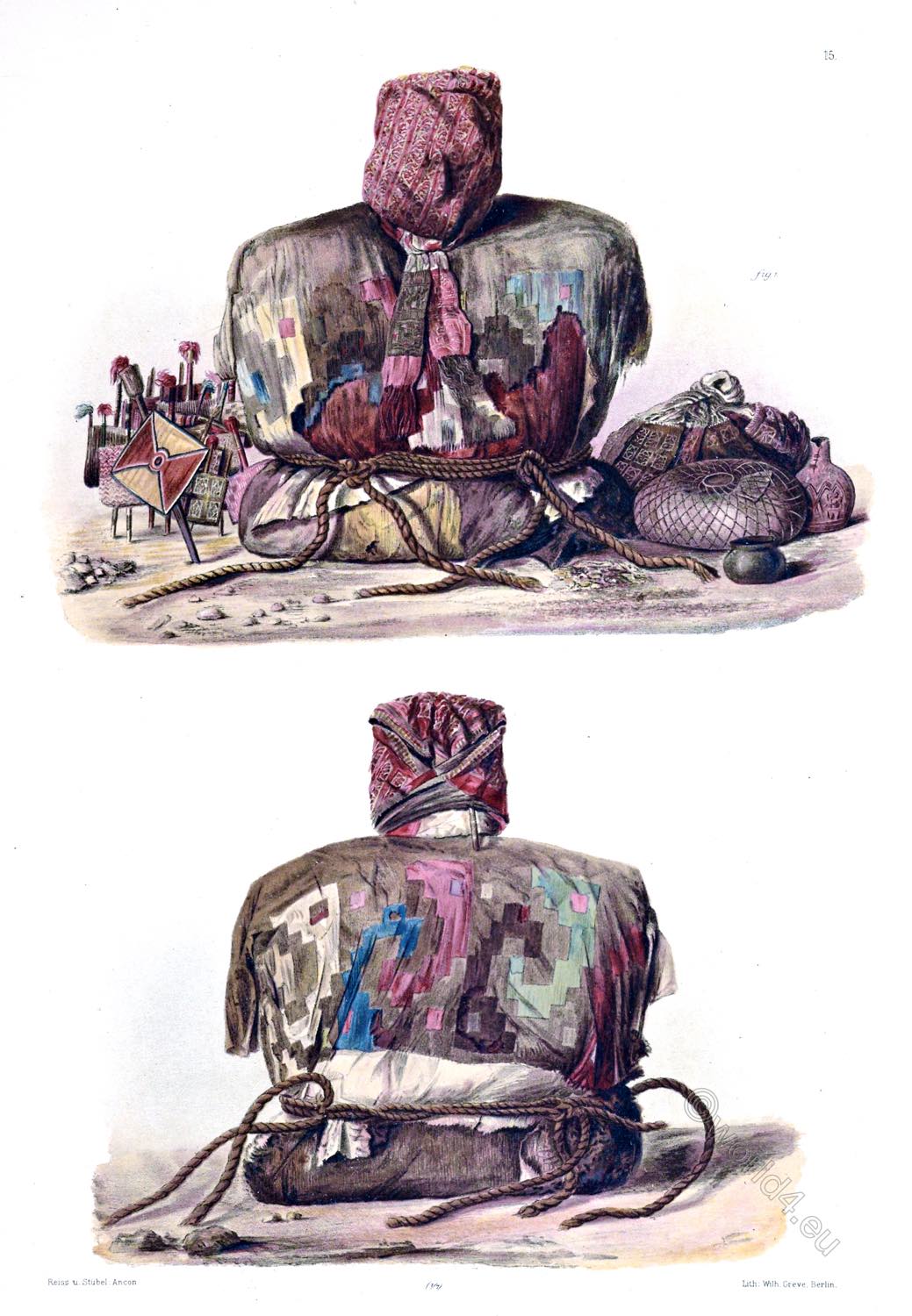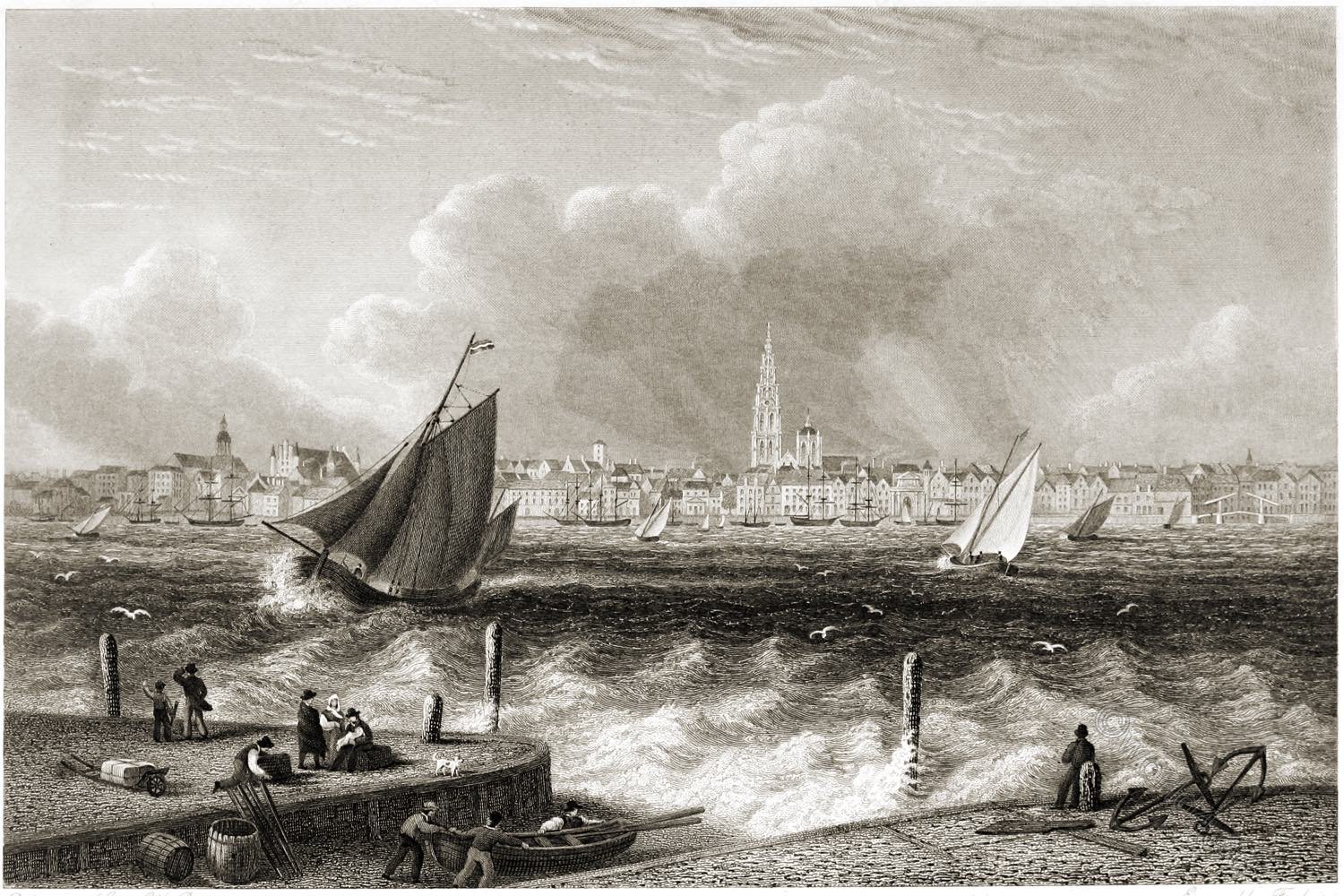
ANTWERP, FROM THE TETE DE FLANDRE.
The annexed view of Antwerp is taken from the Tête de Flandre, a fortified post on the left bank of the river Schelde, immediately opposite to the city.
The river is here a broad and noble stream, and at high water navigable for vessels of large tonnage. Its convenient situation rendered it, at one period, almost the chief commercial entrepôt of the North of Europe, and it reckoned no less than two hundred thousand inhabitants: the population of Antwerp has, however, now dwindled down to little more than a fourth of that number.
There is perhaps no city in the North of Europe which, on inspection, awakens greater interest, and it abounds in fine old buildings which bear testimony to its former wealth and importance. The lofty and richly embellished Tower of the Cathedral forms the most striking object, from whichever side we view the city.
Source: Select views of some of the principal cities of Europe by Robert Batty. London: Moon, Boys, and Graves, 1832.
Continuing
AMSTERDAM & ROTTERDAM. BRUSSELS & ANTWERP.
ROTTERDAM.
AMSTERDAM.
BRUSSELS.
Brussels, from the Hotel de Bellevue.
ANTWERP.
Antwerp, from the Tète de Flandre.

